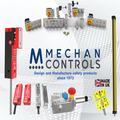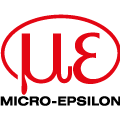
Posted to News on 5th Jul 2023, 13:00
Opportunities on the rise for the development of TSN devices

CC-Link IE TSN is the first open industrial Ethernet to combine gigabit bandwidth with TSN functions. As such, it has been adopted by leading development platform suppliers.
Industrial Ethernet with Time-Sensitive Networking (TSN) functions is now widely accepted as the enabling network technology to support deterministic, convergent communications as the core of Industry 4.0 applications. Industrial automation device vendors interested in offering competitive solutions that leverage the TSN technology can benefit from a rapidly expanding development ecosystem.
The demand for industrial automation applications that use TSN for the deterministic transfer of multiple types of data traffic is quickly growing. It can support, among other key aspects, the merging of information technology (IT) and operational technology (OT) domains for smart operations.
The benefits of TSN are being acknowledged by end users as well as developers. To design TSN-compatible devices, vendors require suitable development tools. These may include items such as software stacks, microcontrollers, application specific integrated circuits (ASICs) or field programmable gate arrays (FPGAs). These enable the industrial automation products to utilise suitable connectivity standards and protocols to deliver TSN functions.
To support the creation of devices that embed innovative and highly competitive connectivity solutions, ultimately addressing market demands, suppliers of development tools have started to include new deployment alternatives within their portfolios. Peter Canty, applications manager at Analog Devices, which offers ASIC solutions, remarks: “ADI is heavily investing in TSN technology. We are working on a number of products, including embedded switching technology, so customers can leverage these products to simplify their installed embedded switching network by having the coexistence of real-time and non-real-time data within one switch.”
Mark Hoopes, director of industrial and automotive at Lattice Semiconductor, explains why the company launched FPGAs that incorporate key TSN standards: “Besides providing tools to enable you to programme, we want to be able to provide connectivity solutions. (…) This would become part of the offering that we can provide to our customers to enable them to get their products to market faster. A key part of it is being able to use CC-Link IE TSN, incorporate it in the products and have flexible connectivity solutions based around that.”
Christian Castel, industrial automation marketing manager at NXP, comments: “CC-Link IE TSN is the first protocol that really implemented the different TSN values to an actual field application.”
Christian Bornschein, marketing and sales director at Port Industrial Automation, a company that offers industrial Ethernet stacks, agrees: “CC-Link IE TSN is a very powerful technology to enable real-time communications for customers in the industry (…) You need to provide customers the appropriate tools to make a powerful development.”
Meeting the specific needs of industrial automation and machine makers is extremely important to shape suitable development tools, which can offer the right capabilities, and ultimately generate a broad ecosystem, as corroborated by FPGA IP core provider, SoC-e. David Modroño, business manager at SoC-e, confirms: “Our working relationship with CLPA started last year because some of our most important customers for industrial automation are actually using CC-Link IE TSN and, as their provider, we are expected to be really close to the technology, understand the environment and be able to provide the solutions that they need.”
Similarly, for HMS, which offers CC-Link IE TSN compatible Anybus CompactCom embedded devices, streamlining the development process for automation specialists is key. Magnus Jansson, product marketing director at Anybus – HMS, reports: “The CompactCom CC-Link IE TSN is a complete communications solution for industrial equipment. That means that manufacturers of machines and devices do not really need to spend time figuring out how to make their product communicate on that network. With a CompactCom built into a product, this can connect to CC-Link IE TSN.”
Driving interoperability
Another major requirement for automation vendors is interoperability, which empowers their TSN-compatible devices to communicate with solutions from other parties in order to help customers create highly effective and responsive systems. Leveraging an open network technology, such as CC-Link IE TSN, is therefore an asset. Mitsubishi Electric, which offers over 100 devices with TSN functions, decided to support this by offering multiple CC-Link IE TSN development tools.
Masaki Kawazoe, director of commercial marketing for factory automation at Mitsubishi Electric, elucidates: “To increase the range of products available, one factor is how easy it is for vendors to develop them. That means we also support vendors who want to develop their CC-Link IE TSN compatible products. (…) So, we have several kinds of devices to help vendors to support CC-Link IE TSN compatibility.”
Michael Zapke, industrial lead at AMD, which produces FPGAs, expands: “We are exploring the opportunities for new solutions with CC-Link IE TSN (…) We have done our own TSN developments in the past and we have also partner companies that are also CLPA members with TSN know-how. Based on that, we want to create future products with CC-Link IE TSN.”
Guaranteed performance
Finally, quality-oriented device makers and development providers tend to invest in solutions that can be certified. An example is the CLPA’s conformance testing, which is highly regarded by industry players.
Keigo Kawasaki, director of industrial automation at Renesas, explains why the company’s ASICs support CC-Link IE TSN: “We are working closely with the CLPA and we are contributing to the expansion of CC-Link IE TSN network in the market. We are also producing devices. We already passed the conformance test and our customers can utilise our product with confidence.”
Michael Grabowski, senior product marketing manager at eSOL, comments: “eSOL joined the CLPA for two reasons. Firstly, to get all our CC-Link IE TSN software products certified. The second point, maybe much more important, is to participate in the very active marketplace that the CLPA is driving. Our software development kits, SDKs, provide the source code for the protocol stack for simple application.”
John Browett, general manager at the CLPA Europe, concludes: “CC-Link IE TSN is an enabling technology for Industry 4.0, and we are delighted to see major industry players acknowledge the opportunities offered by our network technology. The number of companies offering compatible development tools continues to increase, expanding the ecosystem for industrial automation vendors interested in adopting CC-Link IE TSN.
“This growth is highly beneficial for both automation vendors, machine builders and end users, which can take advantage of a variety of solutions to address their needs and advance in their digital transformation.”
Want the latest machine building news straight to your inbox? Become a MachineBuilding member for free today >>

















